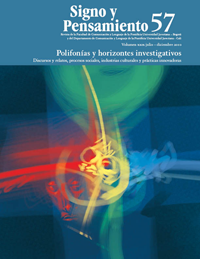Abstract
This study seeks to identify the uses and meanings held by school-attending tweens (11 to 12 years of age) concerning tv advertising. During the quantitative phase, the questionnaire titled ‘Habits related to the consumption of television and practices in the use of money’ was given to a sample group of 137 schoolchildren, 28 of them coming come from an upper socio-economic level, 62 from a middle socio-economic level, and 47 to the low socio-economic level. During the qualitative phase, an in-depth interview was carried out with 30 schoolchildren from the sample. Results show the existence of meaningful differences based on gender and socioeconomic level. This makes it possible to hipothesize that these variables have an influence on uses, opinions and perceptions held by tweens concerning publicity.
De la Fuente, M. y Zambrano, P. (2007), Dis- curso publicitario televisivo dirigido a tweens chilenos [trabajo de grado], Temuco (Chile), Universidad de La Frontera, Carrera de Comunicación Social.
Denegri, M. et al. (2008a), Yo y la economía: diseño, aplicación y evaluación de impacto de un pro- grama de educación económica en escolares de 6.o año básico de Temuco, Santiago de Chile, Proyecto Fondecyt 1060303, Fondo Nacional de Desarrollo Científico y Tecnológico de Chile.
Denegri, M. et al. (2008b), “Tweens, televisión y publicidad: una relación de amor y odio”, en Red infancia y comunicación [en línea], disponible en http://www.comunicainfancia. cl/2008/07/03/tweens-television-y-publicidad- una-relacion-de-amor-y-odio/
Horande, B. (1990), “La publicidad: ¿una influen- cia mayor sobre el menor?” [conferencia] [en línea], Sartenejas, Caracas, Instituto idea, Instituto Nacional del Menor de Venezuela, disponible en http://www.demercadeo.com/ influencia.html.
Robertson, T. y Rossiter, J. (1974), “Children and Commercial Persuasion: An attribution Theory Analysis”, Journal of Consumer Research, núm. 1, pp. 508-512.
Sánchez, J. (1993), Teoría de la publicidad, Madrid, Tecnos.
Uribe, R. et al. (2006), “La influencia de la publi- cidad televisiva en los niños: qué sabemos del tema en Chile”, Revista Economía y Adminis- tración, núm. 152, pp. 22-28.
Vilches, L. (1993), La televisión: los efectos del bien y del mal, Barcelona, Paidós.
This journal is registered under a Creative Commons Attribution 4.0 International Public License. Thus, this work may be reproduced, distributed, and publicly shared in digital format, as long as the names of the authors and Pontificia Universidad Javeriana are acknowledged. Others are allowed to quote, adapt, transform, auto-archive, republish, and create based on this material, for any purpose (even commercial ones), provided the authorship is duly acknowledged, a link to the original work is provided, and it is specified if changes have been made. Pontificia Universidad Javeriana does not hold the rights of published works and the authors are solely responsible for the contents of their works; they keep the moral, intellectual, privacy, and publicity rights.
Approving the intervention of the work (review, copy-editing, translation, layout) and the following outreach, are granted through an use license and not through an assignment of rights. This means the journal and Pontificia Universidad Javeriana cannot be held responsible for any ethical malpractice by the authors. As a consequence of the protection granted by the use license, the journal is not required to publish recantations or modify information already published, unless the errata stems from the editorial management process. Publishing contents in this journal does not generate royalties for contributors.


